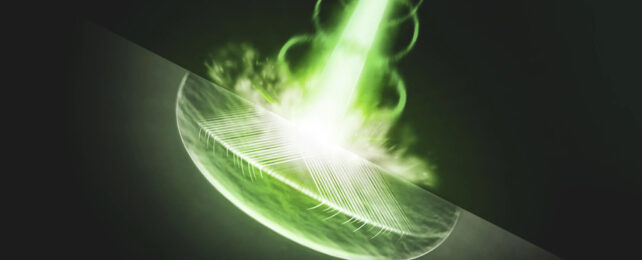Defects in materials don't always lead to a collapse. They can sometimes make them stronger.
As you might imagine, it's important for scientists to know which it's going to be. Now a new study has provided some vital insight into the differences by tracking the speed at which tiny cracks can travel.
Researchers from several international institutions were able to record linear defects – or dislocations – traveling faster than the speed of sound through diamond; findings that should also apply to other important materials, improving models on everything from earthquakes to aircraft.

"Until now, no one has been able to directly measure how fast these dislocations spread through materials," says materials scientist Leora Dresselhaus-Marais from Stanford University.
Dresselhaus-Marais and her colleagues used an intense laser to drive shock waves through tiny crystals of synthetic diamond, monitoring the resulting deformations down to billionths of a second with an X-ray free-electron laser.
The initial wave through the material is elastic, with atoms bouncing back into place as it passes. The second is a plastic wave, where the patterns of atoms in the diamond are permanently dislodged. These dislocations cause so-called stacking faults, where the crystal lattice layers don't line up the way they should.
When dislocations meet they can either attract or repel each other, which in turn can create more dislocations. Understanding these interactions, and the speed of these interactions, is crucial in figuring out how materials will react to stress.
"If a structural material fails more catastrophically than anyone expected because of its high rate of failure, that's not so good," says materials scientist Kento Katagiri from Osaka University in Japan. "We need to learn more about this type of catastrophic failure."
There are actually two types of sound waves that travel through solids: slower transverse sound waves, created by the material resistance, and the faster longitudinal waves that are similar to the ones that move through the air.
The experiments suggest dislocations spread through diamond faster than transverse sound waves. The next step is to run tests to see if they can beat longitudinal sound waves, which will need even more intense laser pulses.
Knowing all of this is a huge help for scientists trying to calculate how materials might react under intense forces. Before now, faster-than-sound defects had only been theoretically modeled.
"Understanding the upper limit of dislocation mobility in crystals is essential to accurately model, predict, and control the mechanical properties of materials under extreme conditions," the researchers write in their published paper.
The research has been published in Science.
